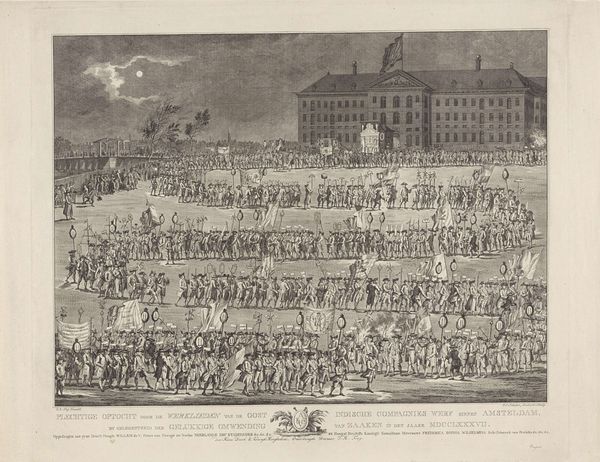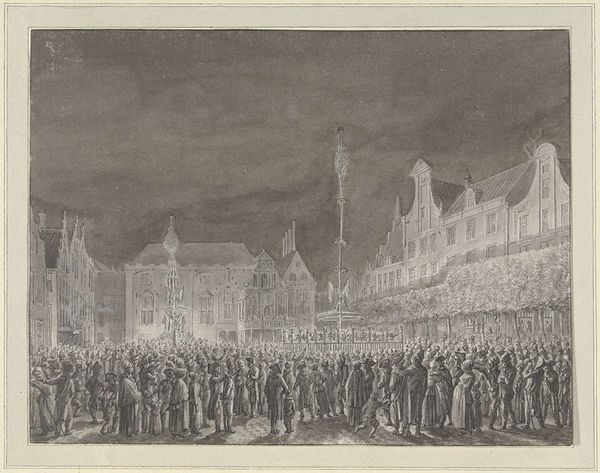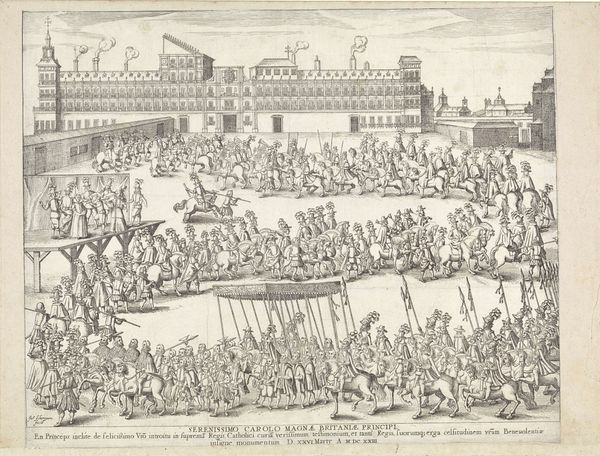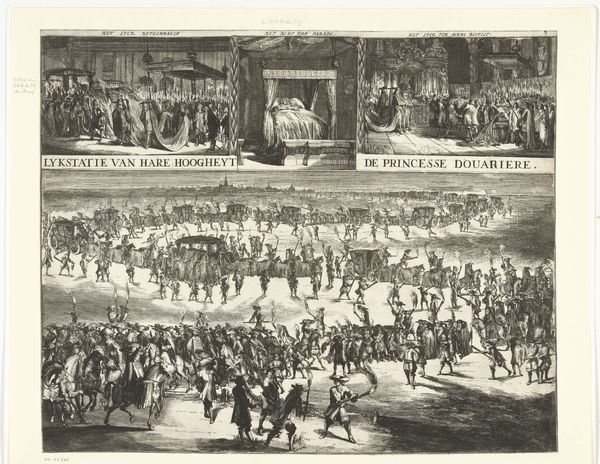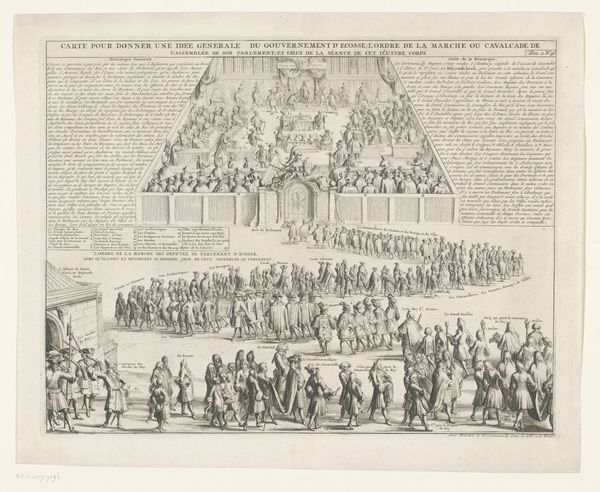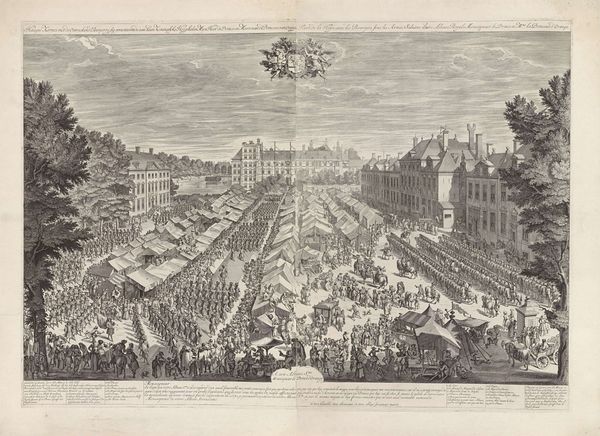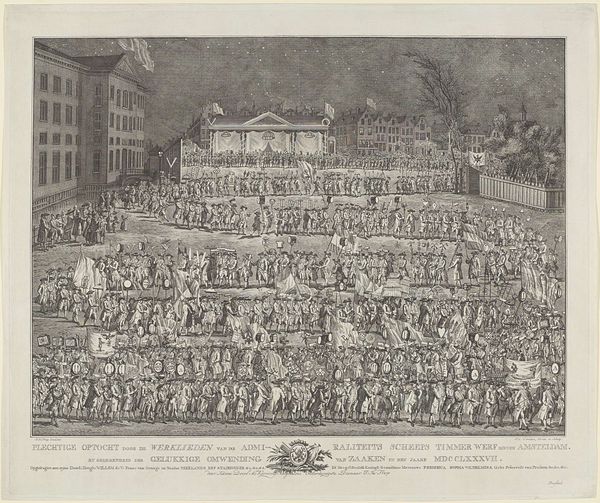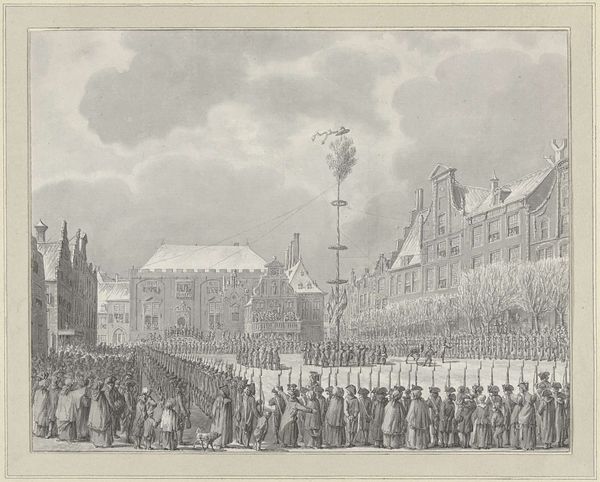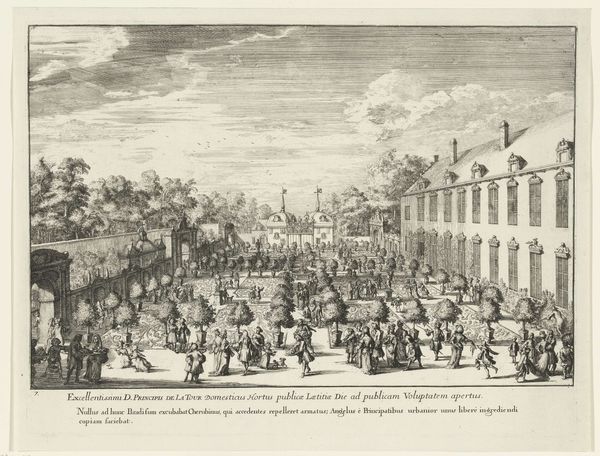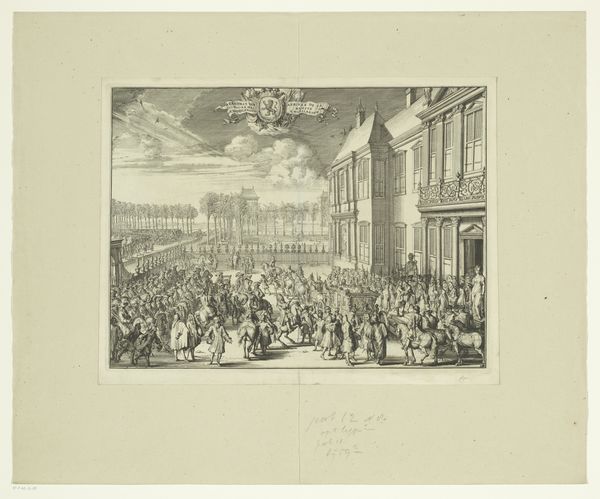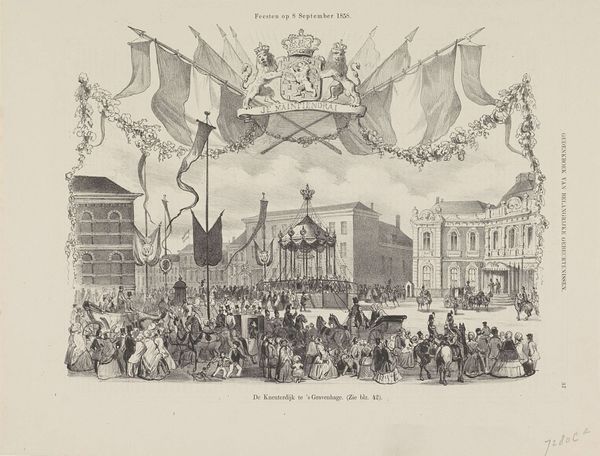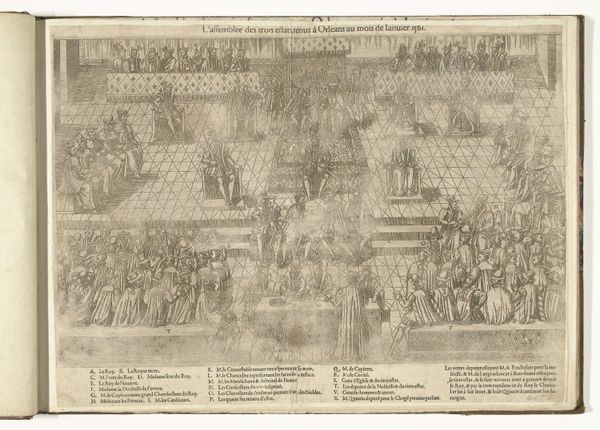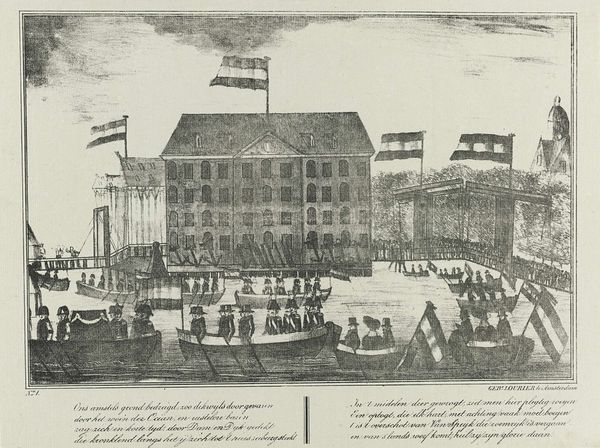
Optocht van de werklieden van de werf van de Oost-Indische Compagnie, 1787 1787
0:00
0:00
print, engraving
# print
#
old engraving style
#
15_18th-century
#
cityscape
#
genre-painting
#
history-painting
#
engraving
Dimensions: height 565 mm, width 673 mm
Copyright: Rijks Museum: Open Domain
In 1787, Johan Christoffel Schultz captured this procession of shipyard workers from the Dutch East India Company, using etching. Notice the flags held high. Flags, as symbols of group identity, hark back to ancient Roman standards, the 'aquila,' and even further to totemic animal representations of tribal unity. These symbols are not merely identifiers; they serve as rallying points, embodying collective aspirations and loyalties. Throughout history, we see similar emblems—religious icons in medieval banners, national colors in revolutionary flags—each bearing the weight of cultural and political meaning. Consider how the swastika, an ancient symbol of well-being, was tragically transformed by the Nazi regime, illustrating the volatile nature of symbols and their capacity to be imbued with new, often contradictory, meanings. This act reveals a profound manipulation of collective memory, twisting an emblem of prosperity into one of terror. This process underscores the enduring power of symbols to evoke deep emotional responses, shaping our understanding of history and identity.
Comments
No comments
Be the first to comment and join the conversation on the ultimate creative platform.
